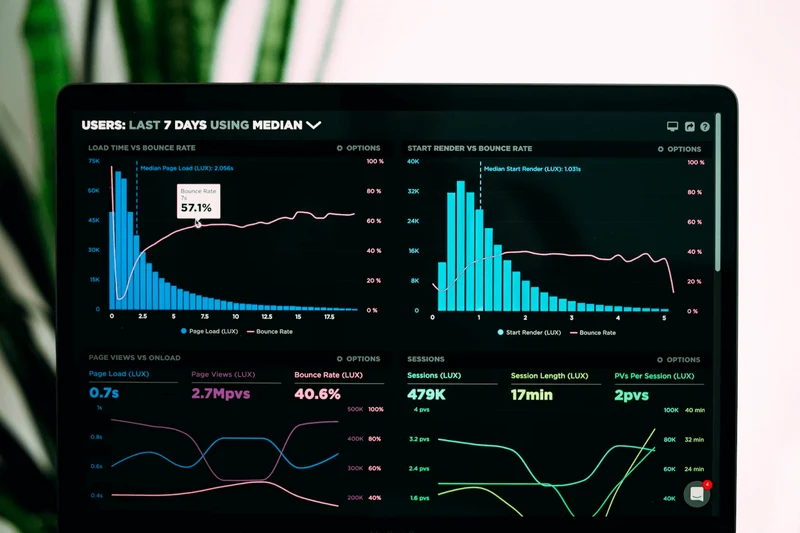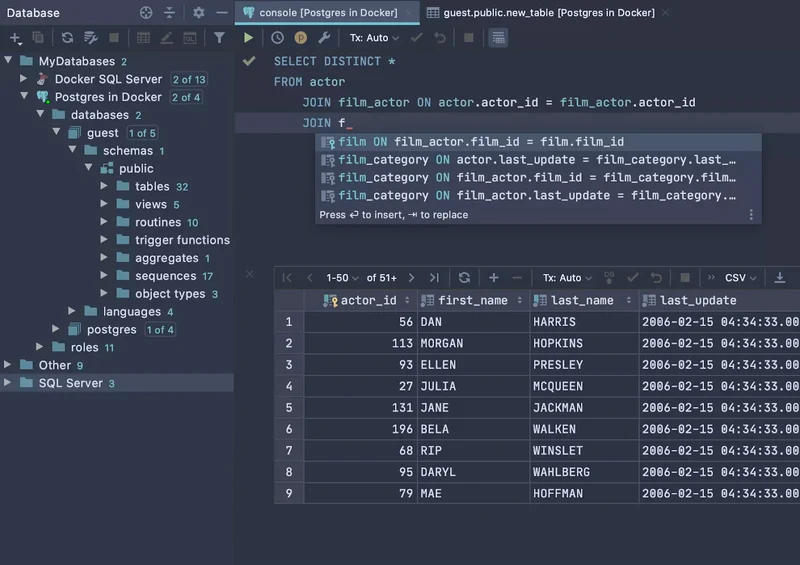Data analysis is an essential part of many businesses and organizations today, but it can be a complex task. DataGrip is an integrated development environment (IDE) designed to make analysis easier and more efficient for data scientists, analysts, or anyone else working with data.
In this blog post, we will explore how DataGrip simplifies data analysis by providing powerful tools for database management and query building — as well as other features that help improve efficiency while working with databases.
What is DataGrip?
DataGrip is an IDE designed to make the process of analyzing any amount of data easier and more efficient. DataGrip enables users to access multiple databases in one interface, streamlining the process of analyzing large amounts of data quickly and accurately.

DataGrip also provides features that allow developers to create applications faster with less code, making it easy for any user regardless of their experience level to get started quickly.
DataGrip Features
Here’s a look at DataGrip’s standout features.
Database Management
DataGrip offers tools such as a database explorer, allowing users to easily navigate through different databases without having to switch between windows or tabs. It also allows users to view information about objects in the database such as tables, columns, views, and more, which makes it easier for them when writing queries.
DataGrip also has a SQL editor which helps with query building by providing syntax highlighting and auto-completion capabilities.
Query Building
DataGrip simplifies query building by providing powerful tools like Query Builder which helps build complex SQL statements visually instead of manually typing them out line-by-line.
It also provides customizable templates for creating common types of queries like SELECT statements or UPDATE commands quickly and easily.
DataGrip offers support for scripting languages such as Python or JavaScript so you can extend your code with custom functions.
Data Analysis
DataGrip makes data analysis easier by providing tools for visualizing and analyzing data. DataGrip offers charting capabilities that enable users to quickly create bar graphs or pie charts that can be used to visualize large amounts of data and make it easier to spot trends or patterns.
DataGrip also offers a built-in tool that can be used to quickly find correlations between different columns of data.
Advantages of DataGrip for Data Analysis
DataGrip is an extremely powerful IDE designed specifically for data analysis.

DataGrip makes it easier to access, analyze, and manage multiple databases in one interface, streamlining the process of analyzing large amounts of data quickly and accurately.
Time Saving
DataGrip's user-friendly features such as its database explorer, SQL editor, and query builder make it easier to organize and analyze data without having to switch between windows or tabs.
With DataGrip you can also create applications faster with less code, saving time that would otherwise be wasted debugging errors or manually typing out SQL statements and other commands.
Visualization Capabilities
DataGrip's charting capabilities enable users to quickly create bar graphs or pie charts that can be used to visualize large amounts of data and make it easier to spot trends or patterns. This helps users identify potential areas where improvements could be made, allowing them to make better-informed decisions about their business operations.
Overall, DataGrip is an incredibly powerful IDE that simplifies the process of analyzing large amounts of data quickly and accurately by providing powerful tools such as its database explorer, SQL editor, and query builder as well as its visualization capabilities.
By using DataGrip users can save time while ensuring accuracy in their analyses which leads to better decision-making in their businesses or organizations.
Cons of a DataGrip Integrated Development Environment
Even though DataGrip is incredibly powerful, it isn’t without its drawbacks. Users should be aware of them before using the software. In this section, we will discuss the disadvantages and how they may affect your data analysis process.
Cost
One of the drawbacks of DataGrip is the cost. DataGrip can be quite expensive and is not available for free like some other IDEs. The cost can range from a few hundred dollars to over one thousand dollars, depending on the features and support you need.
DataGrip requires an additional license if you want to use it on multiple machines or platforms. This can add up quickly and makes the tool too costly for small businesses or those with limited budgets.
Learning Curve
DataGrip also has a relatively steep learning curve for new users. DataGrip is feature-rich and offers many tools that can be intimidating for beginners to learn and use effectively. DataGrip also requires some knowledge of databases and SQL before using it, so those who are unfamiliar with either may struggle when trying to get started on DataGrip.
Additionally, DataGrip's documentation is not always clear or easy to understand, which makes it difficult for new users to find answers or solutions to their questions.
Lack of Customization
While DataGrip offers many features that simplify query building, there are still some limitations when it comes to customization options.
For example, DataGrip's query builder may not provide enough flexibility when creating complex queries or when writing scripts in scripting languages like Python or JavaScript. DataGrip does not have support for certain databases such as MongoDB which means users will have to look elsewhere if they need access to these types of databases.
Those looking for an IDE specifically designed for data analysis should weigh the pros and cons of DataGrip before deciding whether it would fit their needs best.
Conclusion
DataGrip is a powerful IDE that simplifies the process of analyzing large amounts of data quickly and accurately. With its customizable templates, various built-in tools, visualization capabilities, and other features; DataGrip helps users make more informed decisions based on their data trends.
However, it does come with some drawbacks such as its expense and steep learning curve which may be too much for small businesses or those with limited budgets to handle.
Ultimately, DataGrip could be a great choice for those looking for an integrated development environment specifically designed for data analysis — but should evaluate whether the cost and complexity are worth the benefits before making any purchase decisions.
DataGrip and IDE FAQs:
Q1. What are the benefits of DataGrip?
Standout features include customizable templates that can be used to quickly populate queries, allowing users to spend less time creating their queries and more time analyzing the results.
Additionally, DataGrip offers a wide range of visualizations so users can get a better understanding of their data trends as well as a data analysis tool that helps users identify meaningful insights found within their datasets quickly, according to TrustRadius.
Q2. What is DataGrip used for?
DataGrip helps users quickly analyze large amounts of data, identify meaningful insights found within their datasets, save query results into reports and share them with other stakeholders in real time.
Q3. What are some examples of IDEs?
Some of the most common examples of IDEs include DataGrip, Visual Studio, IntelliJ IDEA, PyCharm, Eclipse, NetBeans, CodeLite, and Dev C++.
DataGrip is an IDE specifically designed for data analysis and query building while the other IDEs are more general in purpose but may include additional features that allow developers to create applications or computer programs, according to KeyCDN.
